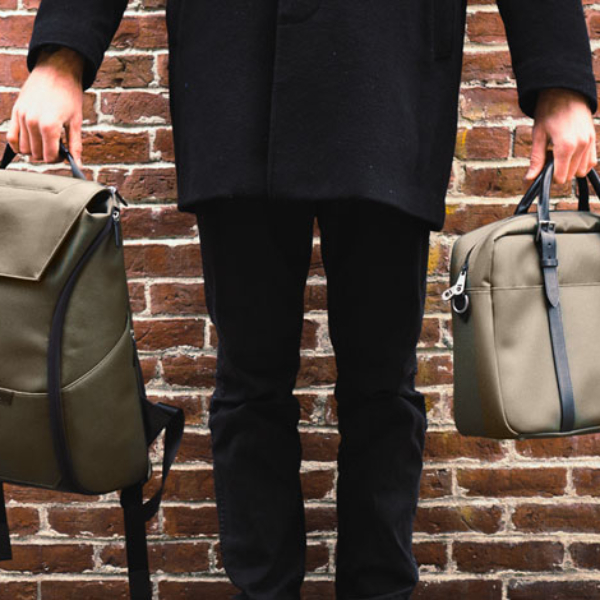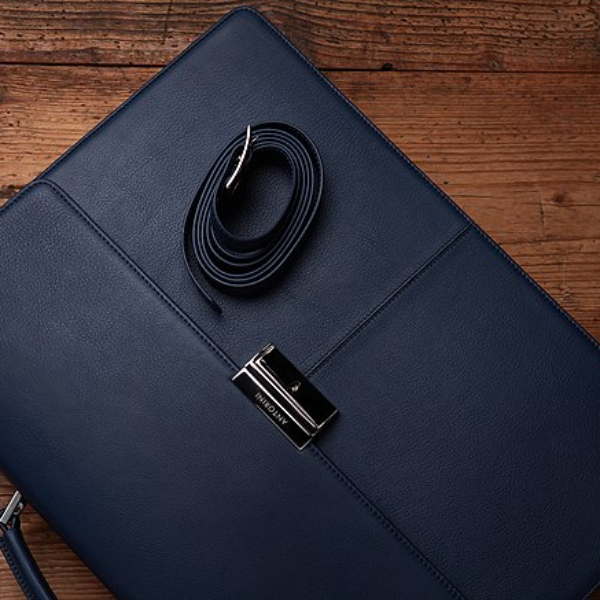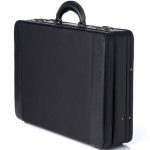Introduction to Briefcase and Suitcase
Choosing between a briefcase vs suitcase depends on your needs. A briefcase usually suits professional settings. It’s made for carrying documents and, often, laptops. Suitcases are better for travel. They hold clothes and personal items for longer trips. Both come in various materials and styles. This helps them meet different demands and tastes. Let’s explore what each offers. We will find out when to use one over the other.

In the past, briefcases served lawyers and businesspeople. Suitcases were for travelers. But now, functions overlap sometimes, and styles have evolved. Briefcases can be more casual, and suitcases more professional. The key is knowing how your choice fits your activities. Consider what you plan to carry. How long will you be away? How important is style versus utility? Answering these questions will guide your decision. It ensures that your selected case serves you best.
Whether you go for a briefcase or suitcase, look for quality. The best option will handle your items safely and match your style. It may even become a part of your signature look. In the next sections, we will dive deeper into each option. You will learn about their histories and typical uses. We’ll discuss the core differences and what to consider when picking one. By the end, making the right choice for your needs will be easy.
History and Evolution of the Briefcase
The briefcase has a long and storied past. Its name comes from its original use by lawyers. They carried legal ‘briefs’ in these cases to court. This is how it got its name. Over the years, the briefcase has become a symbol of professionalism. Business people, executives, and various professionals see it as a work essential.
Early briefcases were just rigid boxes with handles. They were simple yet functional. They kept papers and documents secure. As time passed, their design evolved to meet new needs. By the 1980s, electronic devices like laptops were added. This changed the briefcase once more. New compartments and padding came into play.
Today’s briefcases are more than just document holders. They boast multiple pockets, dividers, and often, laptop sleeves. Materials also varied. Leather, vinyl, tough fabrics, and even metals like aluminum get used. Locks keep contents safe. Some briefcases even come with shoulder straps for carrying ease.
The modern briefcase has embraced trends and technology. It blurs the lines between old-school formality and current function. Whether for carrying papers or tech, it has kept its core identity. The briefcase remains a part of the professional’s everyday gear. It has adapted but kept its essence intact. Its history is a tale of practicality, style, and ongoing innovation. While a suitcase is designed for travel and leisure, the briefcase distinguishes itself as a crucial accessory for professionals, seamlessly merging tradition with modern functionality.
Understanding the Suitcase and Its Uses
A suitcase is ideal for travel. It holds clothes and personal items. This makes it perfect for long trips. Unlike the briefcase, it is designed for carrying a variety of things.
Most suitcases have a flat, rectangular shape. They open with a hinge. This allows for easy packing and access. Many have wheels and telescoping handles. These features make them easy to move around.
Materials for suitcases vary. They can be metal, plastic, or cloth. Each material offers different benefits. Metal is durable. Cloth is flexible. Plastic is lightweight. Choose based on your travel needs. When considering your travel needs, a versatile option like the Topo Designs Commuter Briefcase made from durable yet lightweight materials can provide both flexibility and style for your daily adventures.
Inside a suitcase, you often find straps or compartments. These help keep items in place. Some suitcases lock with keys or combinations. This adds security.
In conclusion, suitcases are versatile travel companions. Their design keeps items organized and secure. When planning a trip, a suitcase is often the go-to choice.
Key Differences Between a Briefcase and a Suitcase
When deciding between a briefcase and a suitcase, understanding their key differences is crucial. Here are some primary distinctions that set them apart.
Briefcase
- Intended Use: Briefcases are ideal for carrying documents and small electronics like laptops and tablets.
- Design: They often have a flat, boxy design, with one main compartment and additional pockets or dividers.
- Material: Usually made of leather, vinyl, heavy fabric, or sometimes metal.
- Portability: Typically equipped with a handle; some have shoulder straps as well.
- Security: Most briefcases have locks to secure the contents inside.
Suitcase
- Intended Use: Suitcases are designed for travel, holding clothes and a variety of personal items.
- Design: Generally flat and rectangular with rounded corners, opening with a hinge for accessibility.
- Material: Can be made of hard plastic, metal, cloth, vinyl, or leather.
- Portability: Usually have handles, and many come with wheels and telescoping handles for rolling.
- Security: Often lockable with keys or combinations for added safety.
When you’re selecting between a briefcase and a suitcase, think about what you’ll carry, and where you’ll go. Briefcases are best for work and professional settings, while suitcases are your go-to for trips and travel. Each serves its purpose well. Your choice should align with your specific needs be it for daily work or occasional travel. Material, design, and functionality are key to finding the right match for you. When considering the right tools for your tasks, you might wonder why does Microsoft Edge have a briefcase icon, as it symbolizes efficiency and organization, much like selecting between a briefcase for office use or a suitcase for travel. Both serve distinct purposes, emphasizing the importance of aligning your choices with your specific needs.
Factors to Consider When Choosing Between a Briefcase and Suitcase
When confronted with the choice between a briefcase and a suitcase, weigh these factors:
- Purpose of Use: Think about the items you intend to carry. Briefcases suit daily work documents and electronics, while suitcases are better for various travel items.
- Duration of Travel: If you’re staying overnight or longer, a suitcase often works best. For a day’s work, the briefcase is ideal.
- Mode of Transport: A briefcase is easier on busy commutes or in crowded areas. Suitcases with wheels suit longer walks, like in airports.
- Organization Needs: If you need quick access to organized documents, choose a briefcase. For keeping clothes and travel gear tidy, go with a suitcase.
- Professional Image: In business settings, a briefcase reflects professionalism. A suitcase may feel out of place.
- Capacity and Size: Assess how much space you need. A suitcase generally holds more, but a briefcase is compact and space-efficient.
- Security: For confidential documents or valuables, a briefcase with a lock offers peace of mind. Suitcases also lock but are often less secure inside.
By considering these aspects, you’ll be equipped to choose the right option between a briefcase vs suitcase for your specific situation.
The Role of Material and Design in Briefcases and Suitcases
The material and design of briefcases and suitcases are key to their function and style. For briefcases, materials like leather, vinyl, or durable fabric often indicate quality. Metal options, like aluminum, add modern appeal. Designs have evolved from simple box shapes to varied styles with compartments and padding for electronics.

Suitcases, on the other hand, come in hard plastic, metal, or softer materials like cloth. Cloth-based designs offer flexibility while metal ensures durability. Modern suitcases have wheels and handles for ease of travel. Inside, you’ll find compartments and straps that hold items in place.
In design, briefcases aim for a professional look. They have smart locks and carry options like handles and shoulder straps. Suitcases focus on secure and convenient travel, with designs that stay sturdy on the move.
To sum up, when choosing between a briefcase vs suitcase, consider the material for durability and design for the intended use. This will ensure you get the right case for your needs, blending style and function.
Modern Features and Innovations in Carrying Cases
Both briefcases and suitcases have evolved with modern times. They now include features that cater to the tech-savvy traveler and the busy professional. Here are some notable innovations:
For Briefcases
- Tech-Friendly Compartments: Many briefcases offer padded sections for laptops and tablets.
- Improved Locking Mechanisms: Combination locks and RFID protection keep your items safe.
- Versatile Designs: Detachable straps and handles increase comfort and portability.
- Lightweight Materials: Aluminum and polycarbonate make briefcases easier to carry.
- Smart Organization: Internal dividers and pockets help keep things in order.
For Suitcases
- Multi-Directional Wheels: Four-wheel spinners let you roll your suitcase any direction.
- Expandable Compartments: More space is available by unzipping extra sections.
- Durable Exteriors: Hard-sided cases resist impact and protect contents better.
- Integrated Weighing Scales: Some suitcases come with built-in scales to avoid airport charges.
- GPS Tracking: Locate your suitcase easily if it gets lost during travel.
These advancements turn briefcases and suitcases into more than just storage containers. They are now travel companions tailored to modern needs. They blend functionality with style, making sure you stay on the move effortlessly and securely. When considering briefcases vs suitcases, think about these features. They can add real value to your carrying case, making your choice perfect for today’s world. When choosing between a briefcase vs suitcase, it’s essential to prioritize features that enhance functionality and style, ensuring your travel experience is both seamless and secure.
Conclusion: Making the Practical Choice for Your Needs
When it comes to selecting the right case, it’s all about your needs. A briefcase is for work. A suitcase is for travel. Think of what you’ll carry and for how long. Also, where you’ll go matters. Choose a briefcase for short trips or daily office use. Pick a suitcase for longer journeys or vacations.
Check the material for toughness. Leather, metal, or hard plastic last longer and look good. For design, see if the case is easy to carry. Does it have wheels or straps? Is it secure? These questions will help. A good choice makes life easier.
Also, consider modern features. Do you need a padded compartment for a laptop? How about wheels that glide in any direction? Maybe a lock that secures your items is important. Today’s cases have many options. Pick the ones that fit your life. When choosing between a briefcase vs suitcase, it’s essential to evaluate your modern needs, such as a padded laptop compartment, versatile wheels, and security locks, to select the perfect luggage that complements your lifestyle.
So, when stuck between briefcase vs suitcase, list what you need. Match those needs to the case’s features. Then, make a smart choice. The right case can support your lifestyle and make a statement. Choose wisely for a smoother experience. Remember, it’s not just a case, it’s part of your daily gear.

